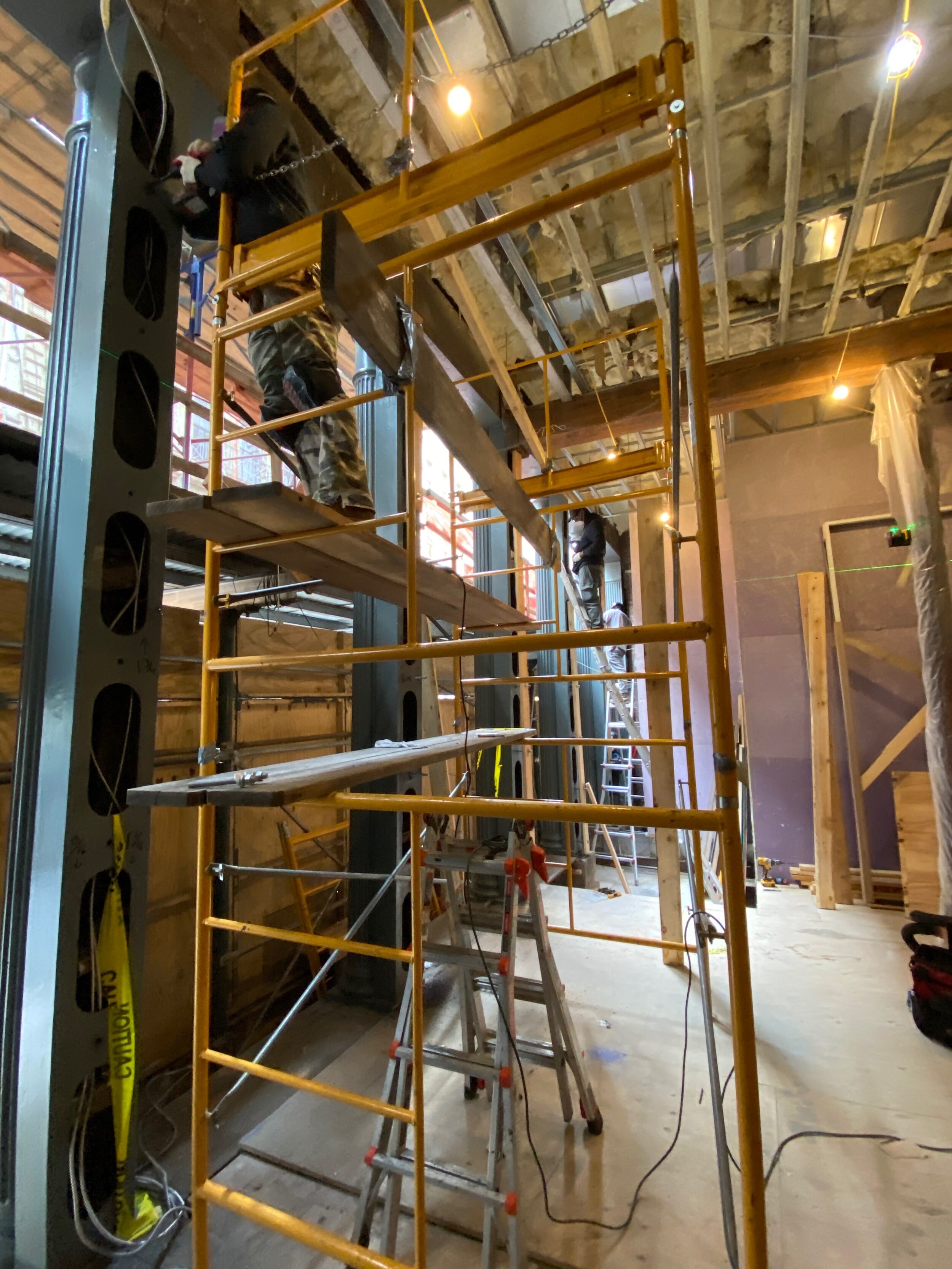51 White Street is undergoing a full and transformative renovation. Located between Church Street and Franklin Place and just east of the iconic opaque and wavy TriBeCa Synagogue, the building is in the East TriBeCa Historical District. Constructed in 1857 and 1858 in the Italianate style for Daniel and A.C. Kingsland, prosperous merchants. It served as a textile and dry goods store.
In a rare move by the Landmarks Preservation Commission, the building is approved to grow from five stories to seven, with the two new upper stories hidden by an extended “fig leaf” parapet. The new stories will host a penthouse, offices on the ground and cellar levels, and nine apartments on the floors between.
Rendering of 51-53 White Street renovations.
The big reveal as scaffolding is removed.
We have 113 window, door, and storefront units going into 51-53 White Street. Eighteen mahogany Parrett storefront units with tempered and argon-filled insulated glass and low-e coatings. Above the storefronts, 24 mahogany LePage XL double-hung bring classic styling but high performance to the Tuckahoe marble-clad and cast iron front façade.
Restored cast iron columns.
Storefronts going in.
On the rear brick façade, we installed 4 French doors and 44 double-hung high performance mahogany windows, also from LePage. An additional 23 vented high performance double hung windows were installed on the west façade/lot line.
Rear facade: before.
Rear facade: after.
TriBeCa East’s history
TriBeCa East was designated as a historic district in 1992 by the Landmark Preservation Commission. The district roughly runs from Church Street west to Cortlandt Alley, with a block between West Broadway and Church and White and Franklin. The district is bound by Canal Street to the north and Worth Street to the south.
Originally marshland, the area was used as farmland as early as 1646. First, as the 45-acre Calk Hook Farm, granted to Jan Jansen Damen by Governor Kieft. The land was subdivided and changed hands after Damen’s death, but was reassembled around 1725. The land was ultimately drained via a canal, for which Canal Street is named. Over the next one hundred years, the land was held by Rutgers, Lispernard, Jay, Munro, White, and other famous early New Yorkers.
Residential development began in earnest in the late 18th and early 19th centuries, starting with simple brick or brick and wood frame two and a half and three and a half story homes in the Federal style. One of these homes remains today, 2 White Street, designated a New York City Landmark.
Textile and dry good industries soon moved into the neighborhood, starting to form the recognizable character of the district as we know it today. First, the ground story of a building would be converted to a storefront. As business expanded, four or five additional stories were added, topped with a flat roof and metal cornice at the top story. To accommodate industrial and commercial activity, new buildings were constructed in the store and loft style. Much of the construction in the district utilized cast-iron, a forerunner to the City’s steel skyscrapers. Cast iron framing at the ground floor allowed for large openings to load and unload goods. The first floor was sized to accommodate offices and show areas as well, which could extend to the second floor, too. Typically three additional stories and cellars offered merchandise storage.
By the late 19th century, increased use of elevators made way for tall office buildings in the neighborhood. By the 1970s, the district saw increased art loft and restaurant space. This decade also saw the use of the TriBeCa moniker when the Office of Lower Manhattan Development designated the neighborhood as Triangle Below Canal (TriBeCa) in 1974.
Read more about the TriBeCa East Historic District designation.
The future of 51 White Street
As the exterior restoration buttons up, the interior gut renovation continues. DAB Investments is overseeing the building’s progress.







